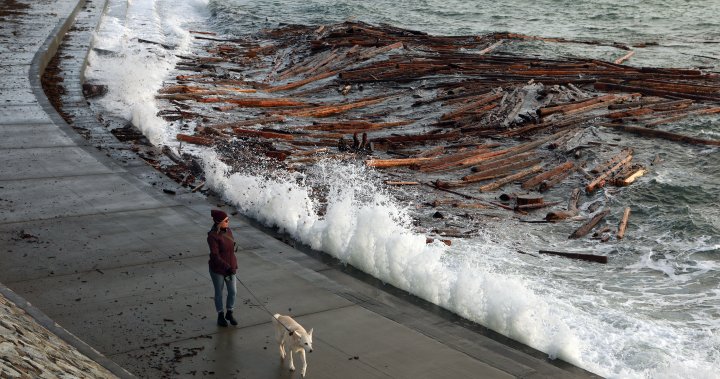Paragraph 1: Impending Coastal Windstorms in British Columbia
Coastal regions of British Columbia are once again preparing for the impact of powerful winds, with gusts predicted to reach speeds of up to 110 km/h in certain areas. Environment Canada has issued wind warnings for sections of the province’s central coast, encompassing communities such as Bella Bella and Klemtu. These high winds, anticipated to accompany the arrival of a potent frontal system, pose a threat of structural damage to buildings and potential power outages. The vulnerability of coastal infrastructure to strong winds underscores the importance of preparedness and vigilance in these communities.
Paragraph 2: Expanded Wind Warning Zone and Prior Wind Events
The projected impact of the incoming weather system has broadened the scope of the wind warnings to include portions of the Howe Sound region, situated just north of Metro Vancouver. In this area, wind gusts are expected to attain speeds of up to 100 km/h. The warning encompasses several communities along the vital Sea to Sky Highway, which connects Vancouver and Whistler, including Squamish, Britannia Beach, and Lions Bay. These latest warnings arrive shortly after Vancouver Island experienced wind gusts approaching 140 km/h, and mere days after a severe windstorm triggered a devastating mudslide in the Sea to Sky area, resulting in at least one fatality.
Paragraph 3: Understanding the Meteorological Dynamics
The powerful winds affecting British Columbia’s coast are a consequence of the interaction between the region’s topography and atmospheric dynamics. The coastal mountains act as a barrier, intensifying the winds as they are channeled through valleys and inlets. The "vigorous frontal system" referenced in the weather warnings describes a transition zone between two air masses with contrasting temperature and humidity. As the front moves through an area, it can generate strong winds, heavy precipitation, and abrupt changes in temperature. The complex interplay of these factors contributes to the volatile weather conditions frequently experienced along the British Columbia coast.
Paragraph 4: Coastal Community Preparedness and Resilience
Coastal communities in British Columbia have a history of confronting and adapting to challenging weather conditions. Residents are generally accustomed to taking precautions in anticipation of strong winds, such as securing loose objects, trimming trees near power lines, and ensuring they have emergency supplies on hand. Local authorities and emergency services also play a crucial role in disseminating warnings, coordinating response efforts, and providing support to affected communities. Building codes in these areas often incorporate wind-resistant design features to mitigate the risk of damage from high winds.
Paragraph 5: Broader Implications of Coastal Wind Events
The impact of strong winds on British Columbia’s coastal regions extends beyond immediate structural damage and power outages. Transportation networks, particularly marine traffic and ferry services, can be disrupted, impacting essential supply chains and the movement of people. The tourism industry, which plays a significant role in the region’s economy, can also be affected by cancellations and closures related to severe weather. Furthermore, extreme wind events can exacerbate the risk of wildfires, particularly during dry periods.
Paragraph 6: Ongoing Monitoring and Future Outlook
Meteorological agencies continue to monitor the developing weather system and provide updated forecasts and warnings. Residents are strongly advised to stay informed about changing conditions and follow the guidance of local authorities. As climate change influences weather patterns, it is anticipated that extreme wind events may become more frequent and intense in the future. This necessitates ongoing research, preparedness planning, and infrastructure investments to enhance the resilience of coastal communities to the impacts of severe weather.

